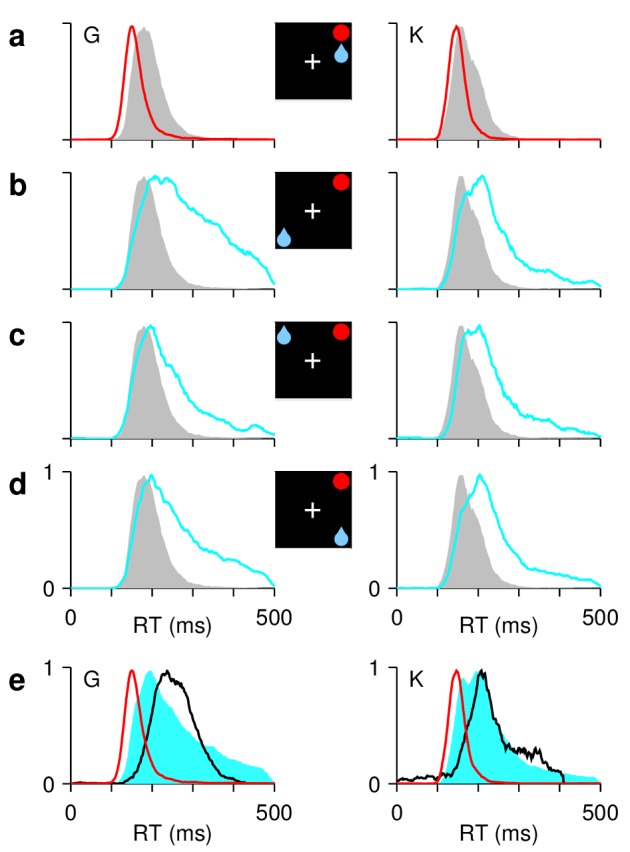All plots compare measurements in congruent (red labels and markers) versus incongruent conditions (blue labels and markers). (
a) Endpoints of saccades to a stimulus located at (10
, 0
) collected during a single session from monkey G. The origin corresponds to the average saccade endpoint. For each data point, the displacement is the distance to the origin. Yellow circles indicate 1 and 2 SDs in displacement from the congruent data. (
b) Mean normalized displacement in each experimental session (
). Displacement values for each session were z-scored, and then congruent and incongruent trials were averaged separately. Colors indicate monkeys (G, gray; K, white). The session shown in (
a) is marked by the green cross. (
c) Mean normalized displacement for each monkey, averaged across sessions. Error bars indicate
1 SE. (
d) Average time course of eye velocity for saccades to stimuli at (8
, 4
) collected during a single session from monkey K. Inset zooms in on the change in peak velocity of
/s between congruent (red,
trials) and incongruent (blue,
trials) trials. Shades indicate
1 SE across trials. (
e) Mean peak velocity in each experimental session. Colors indicate monkeys (G, gray; K, white). The session shown in (
d) is marked by the green cross. (
f) As in (
e) but for saccade amplitude. (
g) Average velocity (top) and amplitude (bottom) values averaged across sessions and monkeys. Error bars indicate
1 SE. All significance values are for differences in means across experimental conditions, from permutation tests for paired data. The results indicate that saccades to high-reward locations are spatially more precise (
a–c) and have higher peak velocities (
d, e, g) than those to low-reward locations, whereas saccade amplitude changes little in comparison (
f, g). Results are consistent with earlier reports (
Lauwereyns et al., 2002;
Takikawa et al., 2002;
Watanabe and Hikosaka, 2005).



